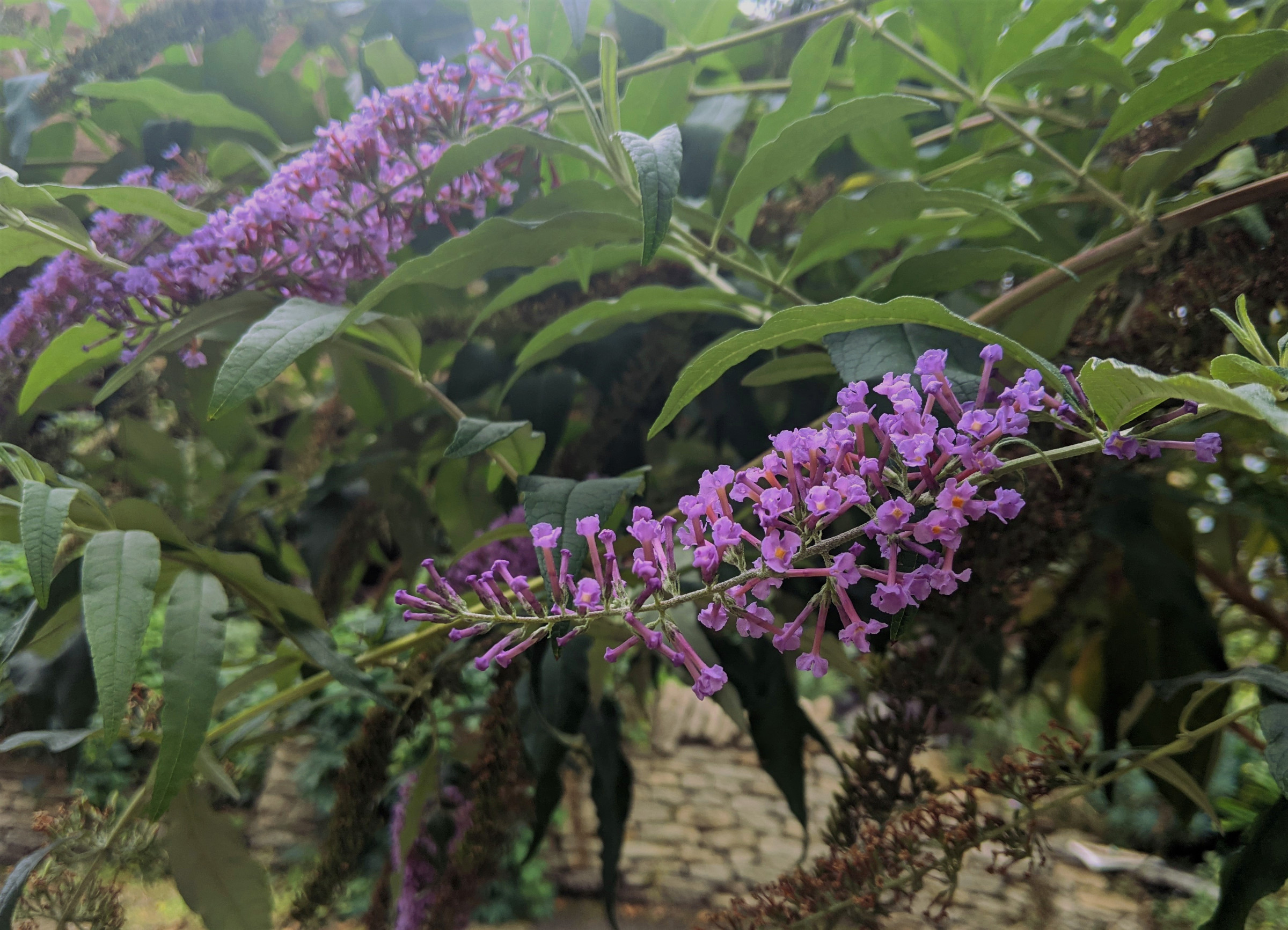Buddleia davidii is a familiar sight to most Londoners, even to those who don’t know it by name. It might be that gangly tree spurting out of the edge of your balcony, from the top of that warehouse roof, or edging the gravelly banks alongside the train tracks. Given a little time and space, buddleias establish themselves into dense thickets: a single buddleia plant produces many thousands of seeds over the course of a year, potentially over a million.[1]
Buddleia is frequently seen spilling out from behind the hoardings of sites awaiting redevelopment. Crossbones was one of those sites once. At the time that the ‘invisible garden’ was being established, Crossbones was overgrown with buddleias that had proliferated in the post-industrial debris, rendering parts of the site almost impassable for its human visitors, were it not for the paths cut by those who tended the garden. In contrast to most of London’s building sites, several of these buddleias remain on site today, now ten years old or more.
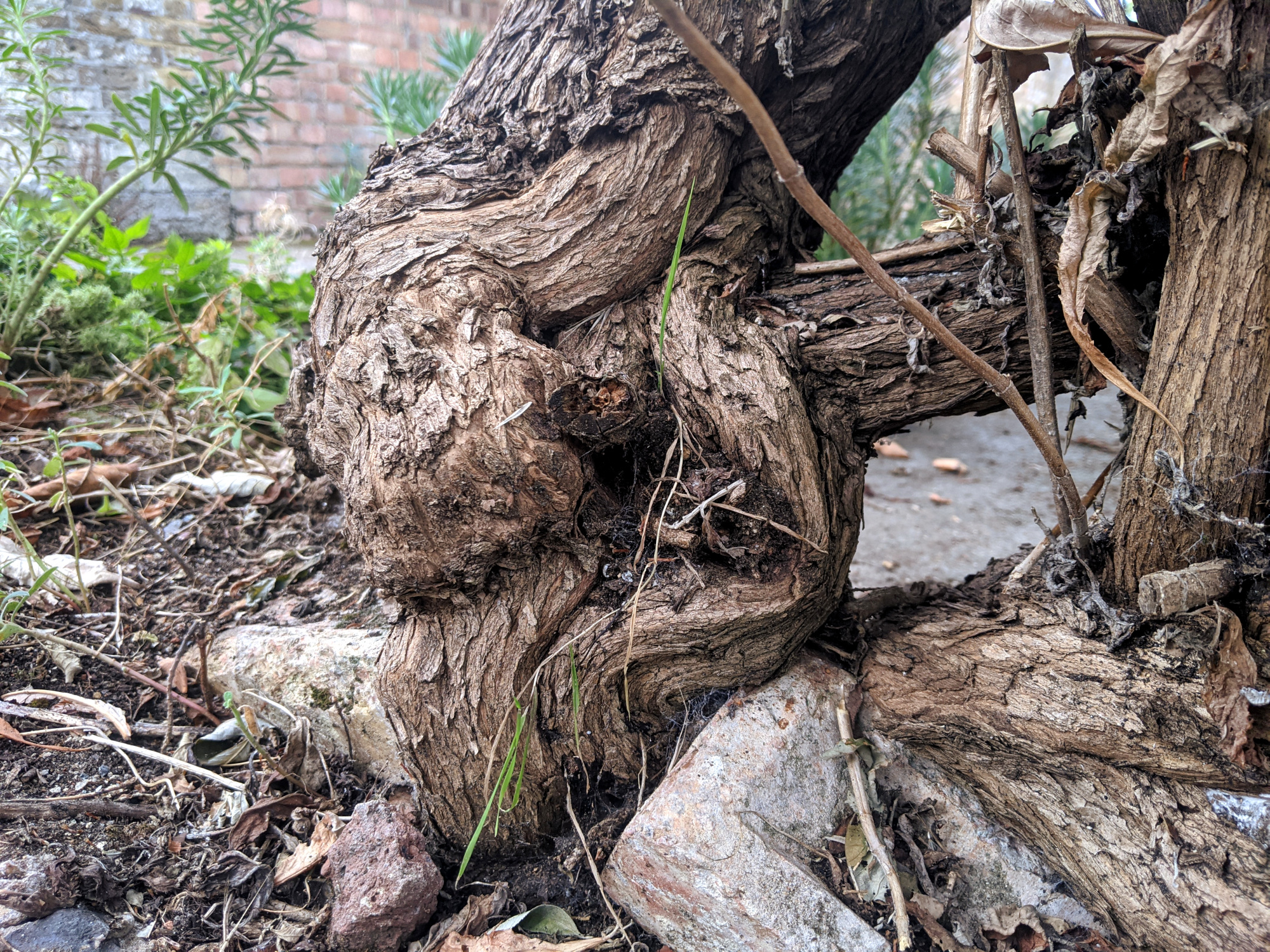
As the Friends of Crossbones worked to transform the local perception of Crossbones from ‘derelict land awaiting redevelopment’ into ‘a very sacred place,’[2] the fate of the buddleias on site transformed along with it. As the burgeoning practices amassing around Crossbones challenged dominant narratives around sex workers and those on society’s margins, these ethical commitments materialised in the garden. Powerful and potentially disruptive ‘weeds’ like buddleia were given their space to thrive.
The ethics of cultivation that has developed around Crossbones implores us to question the damning label of ‘invasive species’ often levelled at plants who, like buddleia, are thriving outside their historical or ‘natural’ range. While so-called invasive species can present a serious threat to biodiversity that should not be ignored, the language of ‘biological invasion’ erases the complex and usually colonial context in which these plants found themselves on previously unknown shores.
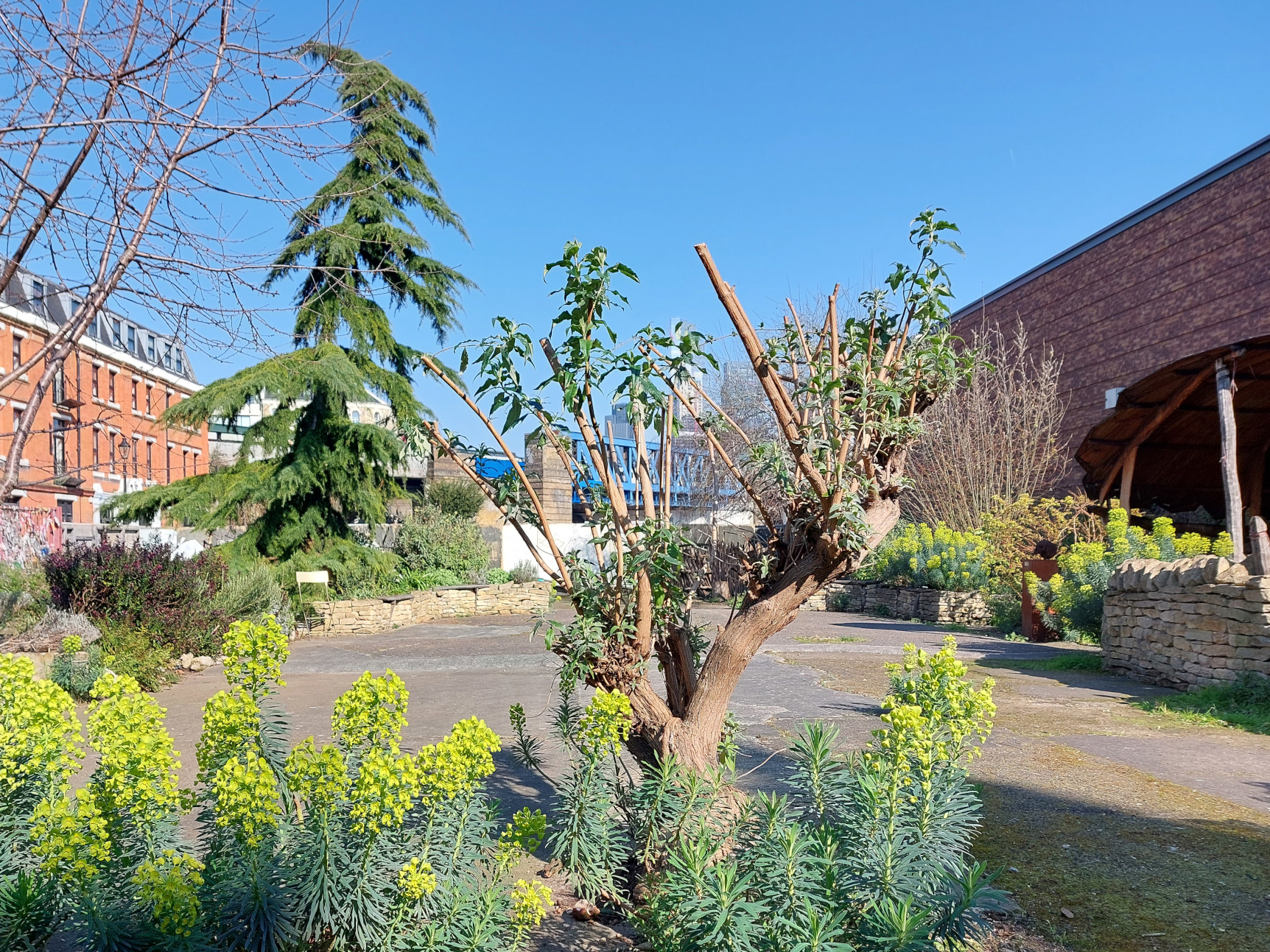
Buddleia came to Kew Gardens from Moupine Province, East Tibet with Basque missionary Father Armand David in 1869,[3] who gave his name to Buddleia davidii and 14 of his other ‘discoveries.’ Introduced as an ornamental plant, buddleia quickly escaped from cultivation and was first recorded growing wild in the UK in 1922. While buddleia has been praised by some ecologists because of its unparalleled provision of nectar to bees and butterflies,[4] its reputation has become increasingly controversial in recent decades, as its territory has continued to expand.
Young buddleia plants are able to get a foothold in locations that are inhospitable to most other plants. Historically buddleia has grown in the mountain ranges of China and its neighbours, including in limestone outcrops. In urban environments, buddleia seeds find their way into the cracks between paving slabs, bricks, and stones, where they germinate and take root. As buddleia has made a new home in London, it has thrived in the lime mortar that holds many of our buildings together. This same material was used to ‘cap off’ Crossbones when it was closed to burials in 1853.
Buddleia seeds are highly adapted for dispersal by wind, and the wind currents generated by cars and trains give them an additional helping hand.[5] They move with the pace of the city, taking advantage of the opportunities humans create as they disturb the landscape. Their fate is intricately entangled with that of the humans they share the city with and so with human politics: buddleia’s urban population ballooned in the wake of WWII, as it virulently established itself over bombed-out sites.
There is much we humans can learn from buddleia about our place in nature. If left unmanaged, buddleia can upset the ecological balance of delicate habitats such as chalk grasslands. Rather subversively, it also causes an estimated £960,000 worth of damage to buildings a year and is a significant resource burden to Network Rail. Clearly, buddleia has disruptive potential. We could call this biological invasion, or we can instead treat this as buddleia inviting humans to respond to its presence.
What labelling buddleia an invasive species fails to recognise is that humans were not only responsible for introducing it to Europe in the first place, but that we have also gone on to create ideal conditions for it to thrive. Our built-up city has provided ecological niches and an opportunity for the plant to evolve in the absence of the herbivores that would otherwise weaken the plants.[6] We have created sheltered urban heat islands and our global climate is becoming warmer and wetter as a result of human activity. We have built our infrastructure using the same elemental materials that buddleia would take root in its ‘native’ range. We have enthusiastically planted it in our gardens and let it set seed.
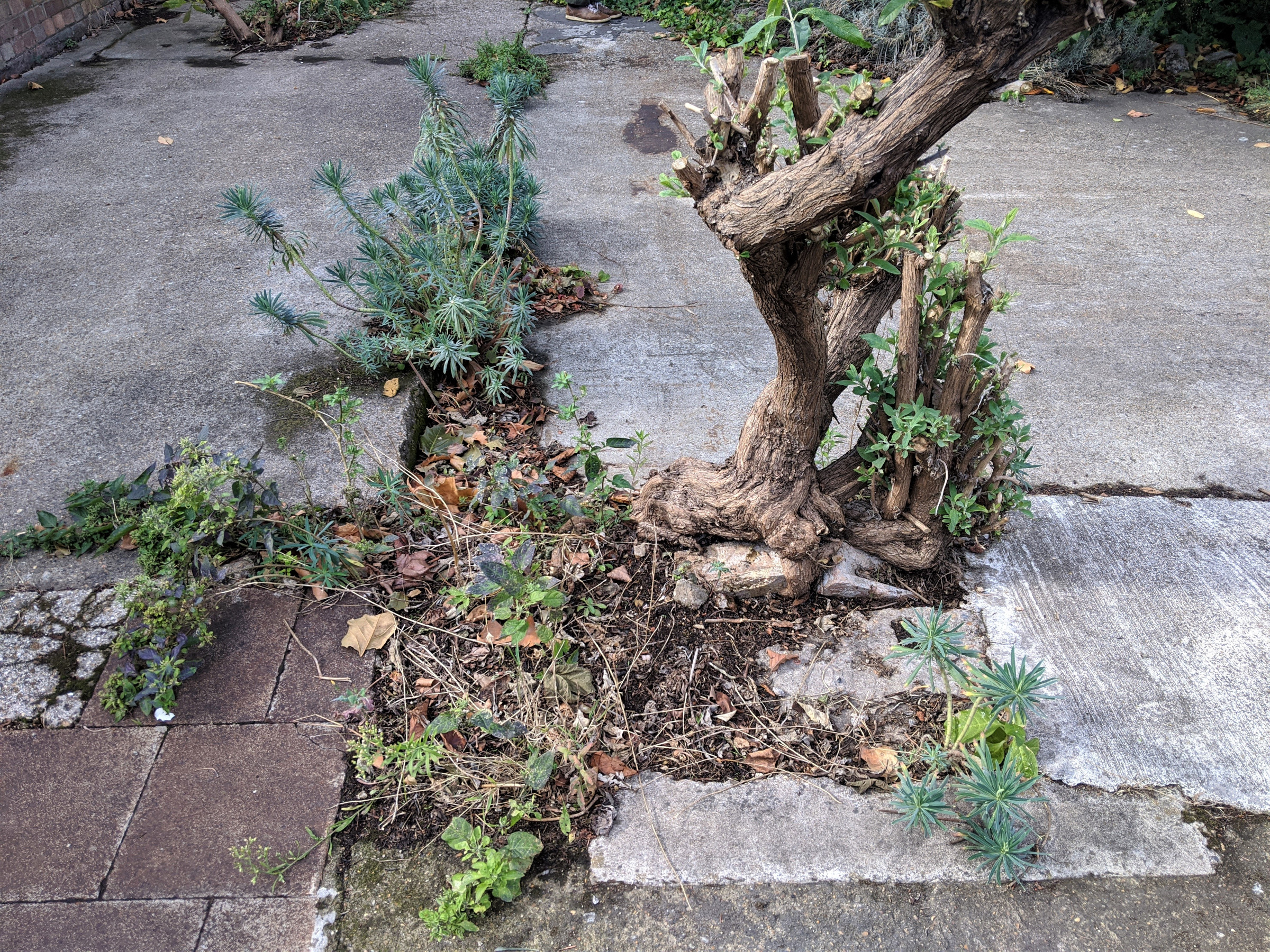
Whereas in unmanaged environments buddleia can have a detrimental effect on biodiversity due to its vigour and capacity to spread, the buddleias at Crossbones instead demonstrate their potential as pioneer species. This particular buddleia (above) is clearly the oldest and most established plant growing from this particular slew of cracks. It has found its way into the crevices left by building foundations and has put on huge amounts of growth each year, dropping its leaves at the end of the season.
Crossbones’ ethics of cultivation has meant that these leaves were not tidied up too carefully, if at all. As the leaves decomposed, they mingled with snail shells, stones, and brick dust, gradually building a soil. Gradually, this has created an environment that is suitable for a wider range of plants, helped along by the gardening team’s decision to introduce plants elsewhere in the garden who, like buddleia, have a tendency to spread their seeds.
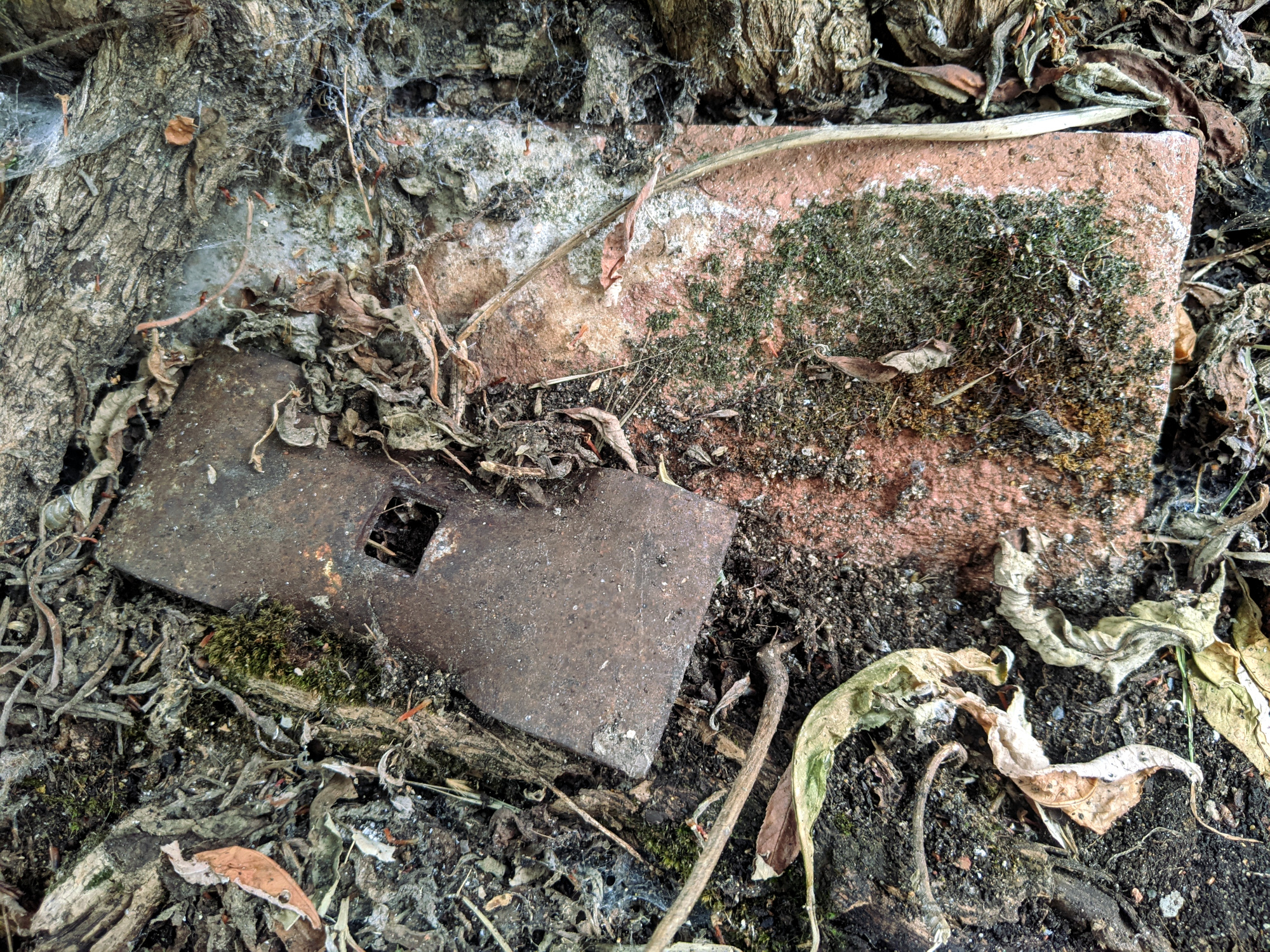
Regular pruning prevents the buddleias of Crossbones from growing too large: the need to protect the human remains encased beneath the surface makes this particularly important. Pruning also encourages healthy flowering, and if timed carefully, can push the flowering season later into the year. This can align buddleia’s flowering season with the season of peak activity for butterflies and so provide them with as much nectar as possible. Removing the seed heads also prevents the plants from spreading excessively. Contrary to the popular narrative that situates humans in a destructive relationship to nature, what buddleia teaches us is that responsive and responsible human management can bring important ecological benefits.
What the ethics of cultivation at Crossbones makes palpable is that buddleia compels us to become stewards of the land. Buddleia reminds us that nature is not a distant, pristine environment somehow set apart from human contamination. Rather, nature describes the movement of life’s processes through sets of conditions shaped by the intimate mingling of human and nonhuman forces. Stepping into a relationship of stewardship, then, is a matter of taking on the responsibility of a world in which humans are already deeply embedded within nature.[7] Sometimes this stewardship will necessitate an active response, and other times a more passive one. What the wild plants of Crossbones teach us is that responsible stewardship demands close attention to the fullness of their contexts, rather than attempting to fit them into a ‘Master Plan.’[8]
References
[1] The Buddleja Garden – Buddleia davidii seeds.
[2] Interview with John Constable and Katy Nicholls
[3] Tallent, N., Watt, M., 2009. The Invasive Buddleja davidii (Butterfly Bush). The Botanical Review 75, 292–325.
[4] Owen, D.F., Whiteway, W.R., 1980. Buddleia davidii in Britain: history and development of an associated fauna. Biological Conservation 17, 149–155.
[5] Non-Native Species Secretariat
[6] Ebeling, S.K., Hensen, I., Auge, H., 2008. The invasive shrub Buddleja davidii performs better in its introduced range. Diversity and Distributions 14, 225–233.
[7] It is important to mention that although this proposition is only recently gaining currency in Western discourse, for many indigenous peoples across the world, this idea is not remotely new, but is rather the foundation of their cosmologies. Robin Wall Kimmerer’s (2013) Potawatomi perspective on listening for the teachings of plants has been particularly influential on my thinking in this post.
